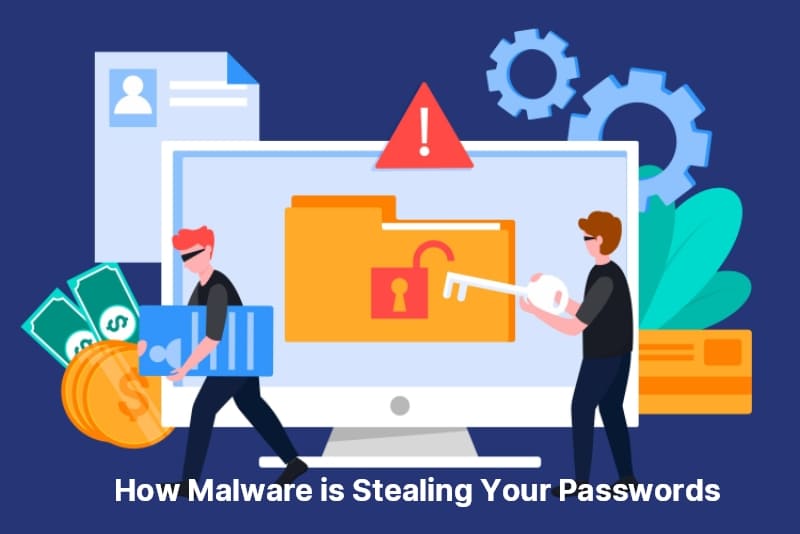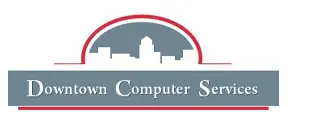
11 May The Silent Threat: How Malware is Stealing Your Passwords
In the digital age, we rely on passwords to protect everything from our bank accounts to our social media profiles. But what if I told you that a silent threat is lurking in the shadows, stealing your passwords without you even knowing it? Malware, a type of software designed to harm or exploit computer systems, is one of the most significant threats facing internet users today. With the rise of remote work and online transactions, the risk of falling victim to malware attacks has never been higher.
In this article, we’ll dive into the world of malware and explore how it’s stealing your passwords, putting your sensitive information at risk. By the end of this article, you’ll have a more profound understanding of the dangers of malware and the steps you can take to protect yourself from this silent threat. So, buckle up and let’s get started!
Understanding how malware steals passwords
Malware is a type of software that is designed to harm your computer system or exploit your data for malicious purposes. One of the primary goals of malware is to steal your sensitive information, including your passwords. There are several ways in which malware can steal your passwords, including keyloggers, spyware, and phishing.
Keyloggers
Keyloggers are a type of malware that records every keystroke you make on your computer. This means that every time you type in your password, the keylogger records it and sends it back to the attacker. Keyloggers can be difficult to detect because they run in the background, silently recording your every move.
Spyware
Spyware is another type of malware that can steal your passwords. Spyware is designed to monitor your computer activity and collect information about you, including your passwords. Spyware can be installed on your computer without your knowledge or consent, making it difficult to detect.
Phishing
Phishing is a type of social engineering attack that tricks you into giving away your passwords. Phishing attacks often come in the form of emails or messages that appear to be from a legitimate source, such as your bank or social media platform. The attacker will ask you to click on a link and enter your login credentials, which are then stolen and used for malicious purposes.
Do you need to remove malware, viruses, or spyware from your computer?
Leave it to our computer security specialist. We are ready to promptly help you and remove all malware and viruses from your computer. Sign up for a test using the form below or call (954) 524 9002 right now.
Types of malware that steal passwords
There are several types of malware that are designed to steal your passwords. These include keyloggers, spyware, and phishing, as we discussed earlier. Let’s take a closer look at each of these types of malware.
Keyloggers
Keyloggers are a type of malware that records every keystroke you make on your computer. This means that every time you type in your password, the keylogger records it and sends it back to the attacker. Keyloggers can be difficult to detect because they run in the background, silently recording your every move.
Spyware
Spyware is another type of malware that can steal your passwords. Spyware is designed to monitor your computer activity and collect information about you, including your passwords. Spyware can be installed on your computer without your knowledge or consent, making it difficult to detect.
Phishing
Phishing is a type of social engineering attack that tricks you into giving away your passwords. Phishing attacks often come in the form of emails or messages that appear to be from a legitimate source, such as your bank or social media platform. The attacker will ask you to click on a link and enter your login credentials, which are then stolen and used for malicious purposes.
Signs that your computer may be infected with malware
Malware can be difficult to detect, but there are some signs that your computer may be infected. Here are a few things to look out for:
Slow computer performance
If your computer is running slower than usual, it could be a sign that malware is running in the background.
Pop-up ads
If you’re seeing an unusual number of pop-up ads, it could be a sign that your computer is infected with malware.
Unusual error messages
If you’re seeing error messages that you’ve never seen before, it could be a sign that malware is interfering with your computer’s normal operations.
Unusual network activity
If you notice unusual network activity, such as your computer sending and receiving large amounts of data when you’re not using it, it could be a sign that malware is at work.
Prevention and protection against malware
Preventing malware infections is critical to protecting your sensitive information. Here are some steps you can take to reduce your risk of falling victim to malware attacks:
Keep your software up to date
Keeping your software up to date is critical to protecting your computer from malware. Make sure to install updates as soon as they become available.
Use strong passwords
Using strong passwords is essential to protecting your sensitive information. Make sure to use a combination of letters, numbers, and symbols, and avoid using the same password for multiple accounts.
Be wary of suspicious emails and messages
Be careful when opening emails and messages from unknown senders. If an email or message looks suspicious, don’t click on any links or attachments.
Use antivirus and anti-malware software
Antivirus and anti-malware software can help protect your computer from malware infections. Make sure to keep your software up to date and run regular scans.
Best practices for password management
Password management is critical to protecting your sensitive information from theft. Here are some best practices for password management:
Use strong passwords
Using strong passwords is essential to protecting your sensitive information. Make sure to use a combination of letters, numbers, and symbols, and avoid using the same password for multiple accounts.
Use a password manager
A password manager can help you generate and store strong passwords for your accounts. This can make it easier to use unique passwords for each account.
Change your passwords regularly
Changing your passwords regularly can help protect your sensitive information from theft. Make sure to set a reminder to change your passwords every few months.
Two-factor authentication as a defense against password theft
Two-factor authentication is an added layer of security that can help protect your accounts from password theft. Two-factor authentication requires you to enter a second form of identification, such as a code sent to your phone, in addition to your password. This can make it much more difficult for attackers to gain access to your accounts.
Tips for safe browsing and downloading
Safe browsing and downloading can help protect your computer from malware infections. Here are some tips to keep in mind:
Only download from trusted sources
Make sure to only download software and files from trusted sources. Be wary of downloading files from unknown websites or links.
Use a pop-up blocker
A pop-up blocker can help protect your computer from unwanted pop-up ads that may contain malware.
Don’t click on suspicious links or attachments
Be careful when clicking on links or attachments in emails and messages. If something looks suspicious, don’t click on it.
Antivirus and anti-malware software recommendations
There are many antivirus and anti-malware software options available on the market. Here are a few recommendations:
Norton
Norton is a popular antivirus software that offers protection against malware infections, phishing attacks, and other threats.
McAfee
McAfee is another popular antivirus software that offers protection against malware infections, phishing attacks, and other threats.
Avast
Avast is a free antivirus software that provides basic protection against malware infections.
Conclusion and how to protect yourself from malware and password theft
Malware is a significant threat to internet users, and it’s essential to take steps to protect yourself from this silent threat. By understanding how malware steals your passwords, you can take the necessary steps to prevent malware infections and protect your sensitive information. Use strong passwords, be careful when opening emails and messages, and use antivirus and anti-malware software to protect your computer from malware infections. And remember, always be vigilant when browsing and downloading from the internet. With these steps, you can protect yourself from malware and password theft and keep your sensitive information safe and secure. Downtown Computer Services offers antivirus software installation services and popular antivirus software updates to protect your computer from malware.
Does your computer need better protection against malware and viruses?
Get a free consultation from our cybersecurity specialist. We are ready to help you quickly and install the latest antivirus software to protect your computer from malware and viruses. Sign up for a consultation using the form below or call (954) 524 9002 right now.
Check out other relevant news
- How Easy-to-Use Hacking Tools Are Fueling Cybercrime
- Cryptocurrency Security for Small Businesses: Protecting Your Wallet
- The Infostealer Epidemic: Protecting Your Business from the Latest Wave of Cyberattacks
- The Identity Crisis: How Compromised Credentials Can Cripple Your Business
- Beyond the Brick and Mortar: Building Your Online Storefront with Digital Marketing
